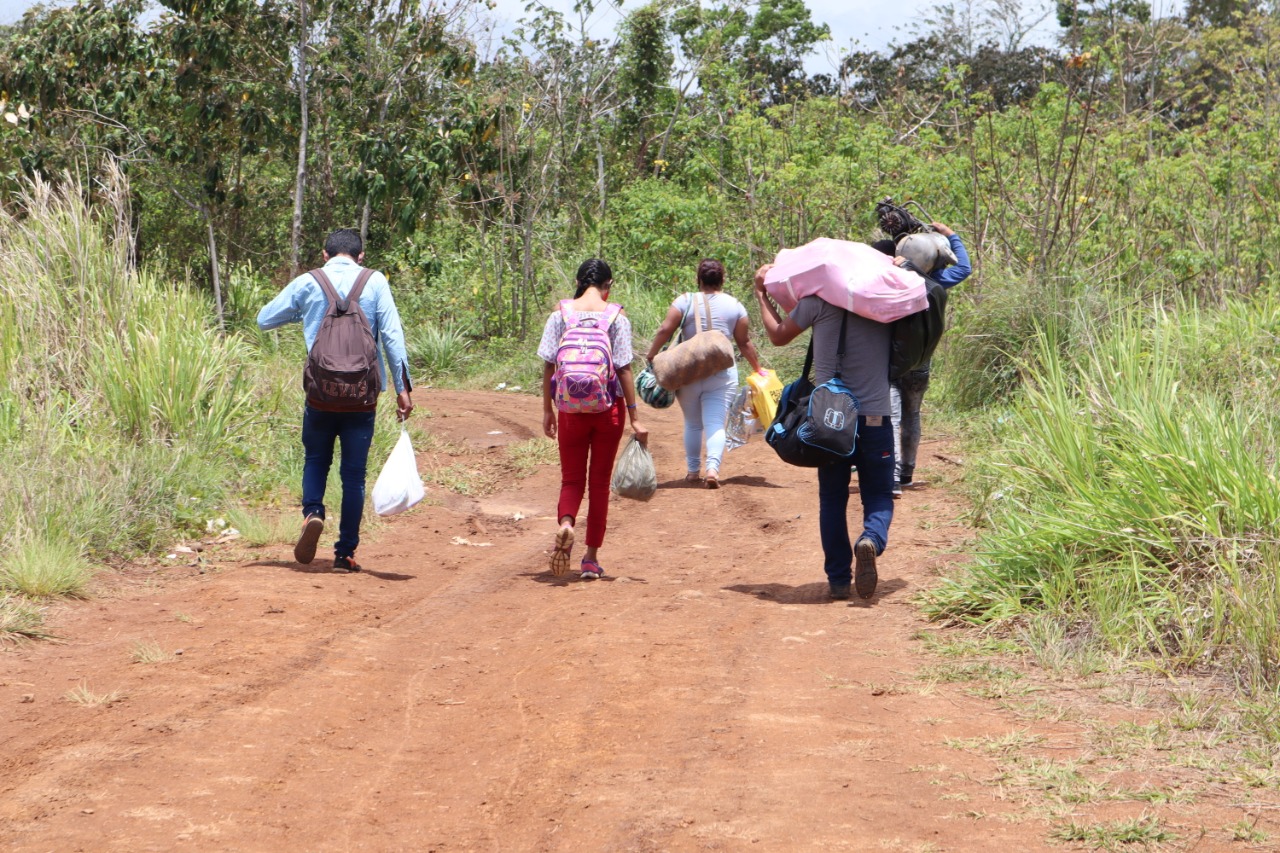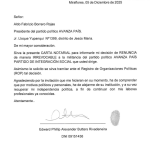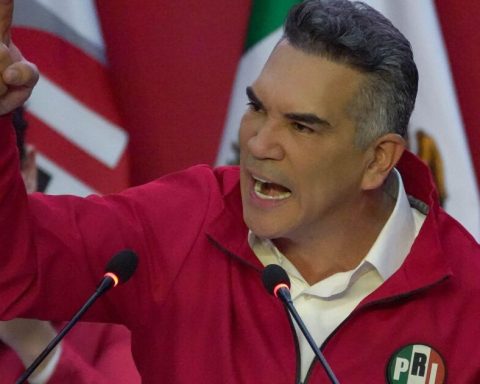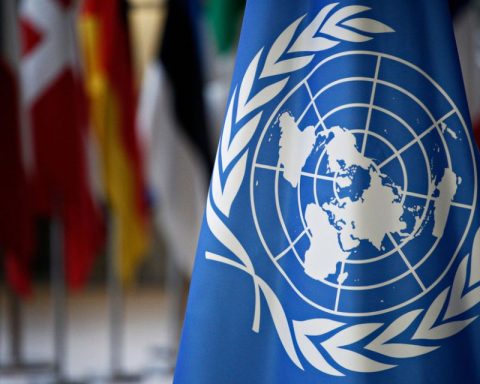More than 120,000 Nicaraguans left the country in 2021, a year marked by increased repression, the stagnation of an economy in crisis and an uncertain future, after unknown votes by most countries in the hemisphere and the perpetuation of the Ortega regime Murillo in power.
Costa Rica and the United States continue to be the main destinations for Nicaraguan migrants, who this year headed more for the United States, according to preliminary figures from the immigration authorities of both countries.
Between January and November 2021, the United States Customs and Border Protection (CBP) registered 72,192 apprehensions of Nicaraguans at the borders, an indicator of the irregular migratory flow to the North American country.
Meanwhile, Costa Rica received 52,928 refugee applications from Nicaraguans, according to data updated as of December 22, 2021. To that figure must be added those who entered irregularly, through one of the numerous blind spots along the porous border between both countries.
The third historical destination of the Nicaraguan migrants, Spain, received 1,181 new asylum applications until November of this year. In Mexico, another destination for Nicaraguan migrants, 2,817 Nicaraguans requested international protection in 2021, according to the Mexican Commission for Aid to Refugees.
The total of these four preliminary figures is close to 130,000 people, and it is a number that is easily exceeded if we added those who entered as tourists, but ended up staying in these and other destinations, and those who entered without being detected by the authorities. each place.
2021: the year in which more Nicaraguans migrated
Thus, 2021 has been the year in which more Nicaraguans have left the country since the sociopolitical and economic crisis began in 2018, almost four years ago. The expert on migration and remittances issues and researcher for the Inter-American Dialogue, Manuel Orozco, estimates that almost 170,000 Nicaraguans will have emigrated by the end of December, including 15% of Nicaraguans who did not reach the United States or Costa Rica. but other countries, entering without being detected, without requesting asylum or under a tourist visa.
Orozco assures that this is not only the highest figure in the last four years, but in the contemporary history of the country. It is an even greater flow than in the 1980s, during the civil war, explains Orozco, who also projects that mass migration will continue and that in 2022 another 80,000 Nicaraguan women would leave.
A CID GALLUP survey, conducted in early December and sponsored by CONFIDENTIAL, reveals that 65% of those surveyed intend to migrate. Other surveys have asked the same question in the past and it is notable that this percentage of people who want to leave due to the economic situation in Nicaragua and with the desire for a better future has grown.
As in Cuba, migration serves as an “escape valve” for the regime
Orozco explains that this migration, “as in the Cuban case, is becoming a convenient escape valve for the regime, causing the families to separate.”
“Family reunification is not on the government’s agenda, but to expel as many citizens as possible. The hopelessness of the economic situation due to the lack of employment, the bad political climate and the lack of vaccination, generates a massive departure of Nicaraguans “, says the expert in his most recent opinion piece, published in CONFIDENTIAL.
It is a “convenient escape valve” because the citizenship that the regime expels is the same that ends up oxygenating the deteriorating economy, through the remittances that it sends to their families. These money transfers currently represent 15% of the country’s gross domestic product (GDP) and Orozco projects that, by 2022, growth in this item will continue at 10%.
Changes in US immigration policy
Although the changes in migratory flows are multifactorial, the arrival of Democrat Joe Biden to the Presidency of the United States in 2021 created expectations among the migrants who undertook their journey to that country, encouraged by the relaxation of some measures in the migration policy of the new Government. For example, the announcement that unaccompanied minors would not be rejected immediately, due to humanitarian reasons, led to the massive arrival of children and adolescents to the US border at the beginning of the year.
Although the majority of minors were from countries of the Northern Triangle of Central America, there were also Nicaraguan children, as the son of Meyling Obregón, a ten-year-old boy abandoned in the desert and rescued by border patrols, a case that captivated audiences around the world when he saw the boy cry and ask for help in a video recorded and published by the agent who found him. Finally, the little boy was reunited with his mother in the United States.
In December of this year, the “stay in Mexico” program was also reestablished, which implies that migrants seeking asylum in the United States must do so from Mexico and await their resolution there.
Human rights organizations condemned this decision, since they consider that it exposes those who seek refuge to the dangers that exist in Mexico, such as violence, kidnappings, extortion, and the precarious conditions in shelters or camps. This year there were several cases of Nicaraguans seeking to reach the United States and who were kidnapped or died in tragic accidents and shootings in Mexico, situations that could continue to occur in 2022, with the resurgence of this policy that would force them to stay indefinitely in that country.
Displacements at the borders of neighboring countries
Despite the fact that the covid-19 pandemic was still present in 2021, countries began to gradually return to normality after the sanitary closures of the previous year. Costa Rica kept its land borders closed for more than a year, finally opening them in April and, little by little, travel between Nicaragua and Costa Rica, countries with close and historical family and commercial ties, resumed.
The movements of Nicaraguans to both the northern and southern borders were significant and were due to vaccination against covid-19. The slowness and inefficiency with which the day began in Nicaragua caused thousands of Nicaraguans to seek vaccination in neighboring countries.
About 100,000 Nicaraguans traveled to the Honduran border posts and neighboring cities to receive the vaccines, while in Costa Rica about 360,000 Nicaraguans were inoculated against COVID-19, of which the majority were residents and another 60,000 received the vaccine. regardless of their immigration status or roots.
Immigration restrictions
In 2021, the Ortega Murillo regime also imposed entry and exit restrictions at the borders. Violating the right to free mobilization, established in the Political Constitution, the immigration authorities not only arbitrarily prohibited the entry of foreign journalists from international media who sought to report the repression on the ground, and the scenario prior to and during the November 7 vote, but rather They also prevented Nicaraguans from entering the national territory, as was the case of the father of the student leader and political prisoner Lesther Alemán and that of Rosalía Miller., a human rights activist who resides in the United States and was about to visit Nicaragua to walk and visit friends and family.
Restrictions on entry, interrogation and tracking of online information on occupations and visitor profiles were extended Costa Rican foreigners who denounced political control on the Peñas Blancas border.
The regime now even decides who can or cannot leave Nicaragua. The “immigration restrictions” were imposed as of May on independent journalists, opponents and civic leaders, relatives of political prisoners and, more recently, militants of the Government party, public officials and their families, various media reported and journalists.

















